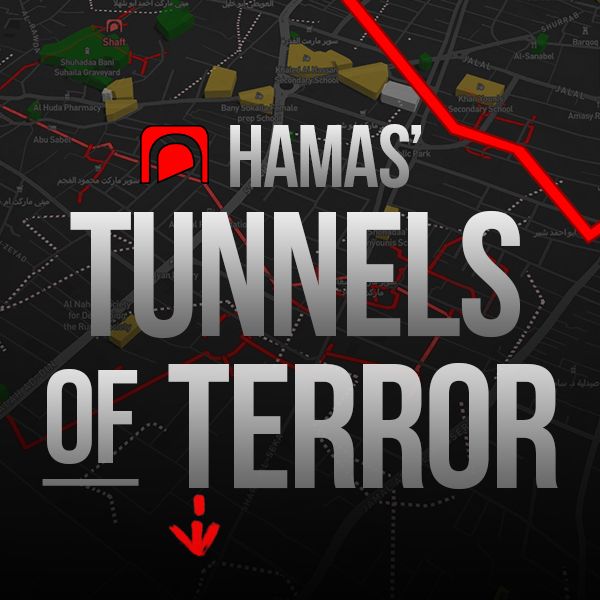The phrase gets repeated often—especially as antisemitism surges in the wake of Hamas’ October 7, 2023, terror attacks—that Jews are the proverbial “canary in the coal mine.”
Jews have long been a bellwether for rising extremism and its broader threat to society; when antisemitism takes root, other forms of hatred and bigotry inevitably follow, leaving other minorities just as vulnerable.
Australia, however, appears determined to ignore this history lesson. Since the Israel-Hamas war broke out, the country has seen an unprecedented wave of antisemitism. More than 2,000 incidents were reported between October 2023 and September 2024—a staggering fourfold increase from the previous year. And that number only reflects official reports; the uncounted cases of harassment, intimidation, and online vitriol push the real figure far higher.
If Australia is the mine, then its canaries are screeching. But instead of taking action, the country’s institutions, from government to law enforcement, seem more interested in pretending the problem isn’t real.
Take Prime Minister Anthony Albanese. This month, he held a press briefing to announce the findings of a national task force— formed in December 2024, more than a year after antisemitic violence had already spiraled out of control—to establish a database tracking such incidents. The task force received over 160 reports in just a few weeks, yet despite this flood of evidence, Albanese had a rather curious take on what was behind it.
According to the prime minister, some of these antisemitic crimes are being carried out by “people who don’t have a particular issue, aren’t motivated by an ideology, but are paid actors.”
Who’s paying them? Unclear. Where’s the evidence? Also unclear.
So, by Albanese’s logic, Jews in Australia aren’t facing a surge in homegrown antisemitism—they’re being targeted by mysterious, foreign-paid operatives. The cars set ablaze outside a building owned by a Jewish community leader on January 17? The work of a hired outsider, apparently. The Sydney synagogue defaced with swastikas on January 10? No particular ideology at play there, and certainly not Jew-hatred.
It’s a convenient way to sidestep responsibility. Because acknowledging the reality of antisemitism in Australia would mean confronting some uncomfortable truths—namely, just how widespread and deeply embedded the problem has become.
And at the heart of this denialism sits the Australian media.
There’s an unspoken arrangement at play: the media doesn’t press too hard, allowing officials to feign concern without actually doing much, while the government, in turn, enjoys the luxury of unchallenged complacency. The result? A climate where even violent, explicitly antisemitic attacks are treated as vague disturbances rather than the ideological threats they so clearly are.
Gaslighting Australian Jews
Over the past year, the Australian media’s hostility toward Israel and its indifference—if not outright contempt—for Jewish concerns over rising antisemitism have become impossible to ignore. Several incidents since October 2023 have drawn international condemnation, forcing an uncomfortable spotlight onto the problem.
Mass Doxxing Attack
In January 2024, more than 600 Jewish academics, artists, and writers in Australia were subjected to a mass doxxing attack. Their personal details were leaked online after a private WhatsApp chat was downloaded and shared.
The leak originated from New York Times reporter Natasha Frost, who admitted to downloading and sharing 900 pages of messages from the closed group, which had been formed after October 7 to provide support amid rising antisemitism. The Times later claimed it had taken “appropriate action” against Frost—without elaborating.
Frost insists she only shared the chat with one person—the subject of a story she was working on. That story was thought to be a January 23 New York Times piece about journalist Antoinette Lattouf, whose ABC Radio Sydney contract was terminated over anti-Israel social media postings. Lattouf is now suing ABC for unfair dismissal.
Not long before the piece was published, Frost left the WhatsApp group—and soon after, details from the chat began leaking online. The 900-page transcript was accompanied by the “Zio600” list, a spreadsheet meticulously crafted to isolate and target “Zionists.”
Is this what it takes for @nytimes to discover that unprofessional reporting on Israel leads to real life consequences for Jews all over the world? https://t.co/YBLTqFboDe
— HonestReporting (@HonestReporting) August 18, 2024
The harassment campaign was swift and vicious. Gift shop owner Joshua Moshe reported receiving anonymous calls branding him and his wife as baby killers and genocidal maniacs.
Frost and The NY Times insist that she never intended for the chat’s contents to spread. Yet, the outcome is undeniable: a journalist at one of the world’s most influential newspapers facilitated a data leak targeting Jews, who were then subjected to threats. To this day, The NY Times remains tight-lipped about what “appropriate action” against Frost actually entailed, while she continues to be employed at the outlet.
‘Where’s the Jews?’
In February 2024, Australian media extensively covered a police review of an October 2023 incident that had previously made global headlines. Just days after Hamas’ October 7 attacks, a pro-Palestinian mob gathered outside the Sydney Opera House, lighting flares and chanting slogans reported as antisemitic, all while the Australian police stood by, seemingly indifferent.
One video appeared to capture them chanting “Gas the Jews.”
Four months later, Australian media outlets eagerly covered a police review—in seemingly more detail than the original incident itself. News.com.au reported that a police forensic analysis of video and audio from the protest found “no evidence a potentially criminal antisemitic phrase was used.”
ABC News ran with a headline that practically framed the mob as vindicated: “Protesters welcome police finding on ‘gas the Jews’ chant at Opera House rally.”
Except the police “forensic” investigation ignored witness statements and instead determined that what had actually been chanted was “Where’s the Jews?” along with other antisemitic phrases.
In short, rather than explicitly calling for Jewish extermination, the mob was actually implicitly shouting a call to hunt Jews down, which is clearly no better than the other chant.
And yet the Australian media’s framing of the police findings was almost triumphant, with headlines misleadingly suggesting no antisemitic chants had been heard at all.
Publicly-Funded Broadcaster Cleared
In October 2024, the ABC Ombudsman’s Office—tasked with upholding the taxpayer-funded broadcaster’s supposed standards of accuracy and impartiality—released its findings on a May 2024 article that described a Hamas rocket attack on Tel Aviv as a “show of resilience.”
The Ombudsman concluded that this phrasing did not breach the corporation’s guidelines, stating, “We do not believe the use of resilience represents lauding, glamorizing or celebrating Hamas’ actions.”
In a ruling that reads like satire, the Ombudsman elaborated: “By definition, resilience means the capacity to withstand or to recover quickly from difficulties. After a sustained offensive from Israel over months, in firing this latest barrage of rockets, Hamas had demonstrated its continued capacity to launch rocket attacks against Israel.”
So, according to the ABC, when a proscribed terrorist organization fires rockets at civilian populations, it’s simply demonstrating its ability to “recover quickly from difficulties.” One wonders if the Ombudsman would extend the same generous definition to other acts of indiscriminate violence.
Calling Out Australian Media Bias
In the eight months following Hamas’ October 7 massacre in Israel, five of Australia’s major news outlets—The Age, News.com.au, The Australian, ABC News, and The Sydney Morning Herald—published thousands of reports on the war. A data analysis by HonestReporting found that these outlets referenced Gaza an average of nearly 20 times per day in their news coverage.
And these are just the national publications. Australia’s media landscape is vast, with countless smaller news outlets and local publications also shaping public discourse.
HonestReporting has taken an active role in holding the Australian media to account. Since the war began, we have secured numerous corrections from major outlets, including ABC News, News.com.au and the Sydney Morning Herald.
✅ Australia’s public broadcaster, @abcnews has issued the following editor’s note and corrected a serious error after we contacted them.
❌ If only ABC took as much time doing due diligence when writing its articles as it appears to have done fact-checking our complaint. https://t.co/OEvoYoDQts pic.twitter.com/JaVH7e6qmF
— HonestReporting (@HonestReporting) February 1, 2025
However, monitoring Australia’s media is a mammoth task. While HonestReporting is using the latest tools to track bias, we continue to rely on our readers to flag instances of misinformation and unfair reporting.
Australia’s media helped fuel this crisis—and now, instead of confronting it, it’s making excuses. Enough is enough. We will continue to expose the bias, but we need your eyes on the ground. If you spot misinformation or media spin, send it to [email protected]
Liked this article? Follow HonestReporting on Twitter, Facebook, Instagram and TikTok to see even more posts and videos debunking news bias and smears, as well as other content explaining what’s really going on in Israel and the region. Get updates direct to your phone. Join our WhatsApp and Telegram channels!


